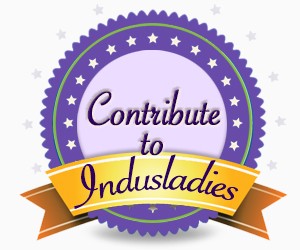The weaning guidelines have been changing over the years. We tell you when is the best age when weaning should begin.
What is Weaning?
Weaning is the process of reducing the amount of breastfeeding that your child does. It involves the gradual introduction of solid foods into her diet.
At the end of the weaning process your child will be eating almost all the foods that the rest of the family does. Although in the pureed, mashed or in the chopped form.
Types of Weaning
There are two ways, which mothers normally choose to wean the babies.
Abrupt Weaning:
This is when breastfeeding is stopped all of a sudden.
This can be difficult for both the mother and the child though, especially because of the bond that develops during feeding.
Sometimes, medical reasons can result in abrupt weaning to happen.
Gradual Weaning:
This is the most common form of weaning.
Gradual weaning will give your child the time to transition both physically and emotionally.
You could begin by stopping the feeding session once in a day and replacing it with formula or outside food. Let this continue for a few weeks. Then you could increase the number of times that you replace a feed with solid food.
Another trick is to continue giving her the breast milk, a taste that she is familiar with, but in a bottle or a cup instead of offering her your breasts. This also prevents painful engorgement that could occur when breastfeeding is stopped.
When to Begin Weaning?
The question of when to begin the weaning process has been a perennial one with all mothers.
Ideally you should exclusively breastfeed your child till she is six months old. Health experts agree that a baby should ideally start to be weaned only after she is six months of age.
- For the first six months babies get all the nutrients that they need from breast milk itself.
- Exclusive breastfeeding till six months of age improves her immunity against various illnesses like allergies, asthma and stomach and lung infections.
In fact, once the child is around six months old, her body begins to run out of some key nutrients like iron. It is thus important that these nutrients are replenished through various kinds of outside foods.
Ultimately, the choice of when you will discontinue breastfeeding is a personal choice. You should consider the overall health and immunity of your child and the management of your milk supply when it comes to deciding whether to wean your child or not.
Find out when other mums weaned their baby here: When Did You Wean Your Baby Off
Signs that Your Baby is Ready to be Weaned
If you are a mother who is wondering if your child is ready for weaning or not then you could look out for some signs.
- Your child should be able to hold her head steadily and sit upright on her own
- Your child should be able to coordinate her eyes, mouth and hands. Only then will she be able to pick up the food pieces on her own. Else you might have to feed her with a spoon initially.
- Your child should be able to swallow the food. So begin with only a small quantity. See whether she is managing to swallow it without bringing the food up.
Breastfeeding while Weaning
Just because you have begun to wean your child, it does not mean that you will have to stop breast-feeding altogether.
Since cow’s milk is not suitable for babies under the age of one, they will continue to get many of their nutrients through your milk.
Once your baby is a year old, she would be eating outside food for most of her main meals. It is only then that you could begin to drop your normal feeds. However, you can continue to feed for as long as you choose too. In fact, WHO says that women can breastfeed a baby till the age of 2.
Weaning should begin with what Foods
Since your baby has been only breastfeeding till now, she will take some time to get used to the concept of swallowing, let alone chewing the food.
So it is best to begin weaning with pureed food or which has been mashed well. Slowly you can move towards a lumpier consistency.
- 1st stage: Baby is 6 months: The food should be smooth and pureed
- 2nd stage: Baby is 6-9 months: The food can be a thicker consistency and you can introduce some soft finger foods too
- 3rd stage: Baby is 9-12 months: Finely chopped or minced foods
- 4th stage: Baby is older than12 months: A variety of easy-to-hold finger foods
Find out more on best foods for weaning here: Foods for Weaning Your Baby
Foods that should be Avoided
Babies still have a very weak digestive system. So avoid any kind of food that could cause an allergic reaction. For example peanuts and honey.
Various kinds of seafood should also be avoided.
- Raw shellfish could cause food poisoning
- Fish like shark and swordfish have high amounts of mercury and could adversely affect their nervous system
Limit the amount of salt and sugar that you add in your baby’s diet too. As most processed and canned foods contain these in high quantities, limit the use of these in your baby’s diet.
Early Weaning is not Good
It is good if you avoid weaning your child off the breast too soon.
Early weaning can result in a number of issues.
- Digestion: An infant’s digestive system is not mature enough to digest outside food till he is six months old. So weaning your child before this age can cause digestive problems like constipation or diarrhea.
- Skin: Often early weaning causes skin problems in the child too. For example she could develop rashes or eczema. Eczema causes the skin to itch and also to swell up.
- Weight Gain: Outside food from a very early age can also lead to a sudden weight gain and obesity at a later age.
- Nutritional Deficiency: Your child needs the nutrients that are present in breast milk. If you wean her off the breast at a very early age, then nutritional deficiencies could arise.
Reasons for Early Weaning
Sometimes, even if you don’t want to, there could be reasons when you have to wean your baby off the breast at a very early age.
Sore Nipples:
Sore nipples are often one the foremost reasons. While this is normal in the initial couple of weeks, the soreness should reduce thereafter.
The soreness could be due to:
- A plugged duct: A plugged duct is a milk duct in your breast that is blocked.
- Engorgement: Engorgement is when the breasts pain because of the excess of milk that has accumulated inside it
Milk Supply:
Sometimes you might just not produce enough milk that will satisfy your child. In such cases you do not have an option but to supplement it with formula feed.
Work:
You might have to wean your child if you have to return to work soon after delivery.
You could find out if your work place has an option where you can nurse your child during office hours.
You could express your milk and put them in bottles that the baby can drink. However if you do not have a proper support system then even this is not an option.
Tips to Wean Smoothly
Never force your child when it comes to weaning. Take it one step at a time and have a lot of patience.
We have more weaning tips and tricks for you here: 10 Tips to Transition from Breast to Bottle or Cup
As a mother, always remember that the transition will be easy only when both of you are ready.






